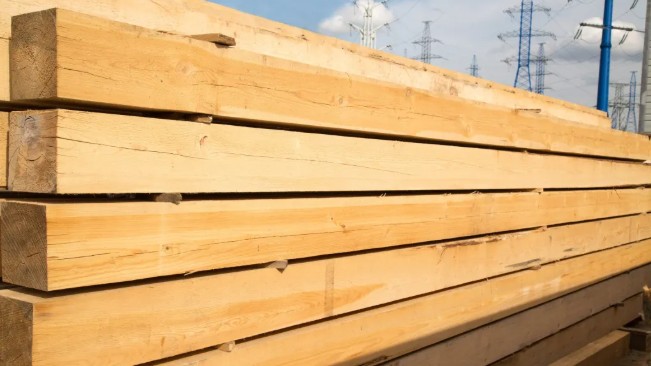Lumber Prices Slide in Seasonal Slowdown
Originally Published by: Builder Online — September 10, 2025
SBCA appreciates your input; please email us if you have any comments or corrections to this article.
In a typical seasonal pattern, lumber sales and prices declined in the final weeks of August as the annual market slowdown took hold, according to Keta Kosman, publisher of Madison’s Lumber Reporter. In 2025, the market followed a similar patter, with prices of several lumber and panel commodity groups remaining flat.

Adobe Stock
“Volumes of Canadian wood products destined for the U.S. fell significantly, as the attempts in recent weeks to boost prices were rejected by customers,” Kosman says. “As such, operators in Canada had to reduce asking prices down. Customer counteroffers were just too strong for sawmills to resist. Even so, price levels were somewhat higher than in the same week one year and two years ago.”
Prices Mixed Relative to Recent Years
For the week ending August, 2025, the price of the benchmark softwood lumber item—Western Spruce-Pine-Fir 2×4—was $450 per thousand board feet, down 8% from the previous week and 10% lower than a month ago. However, prices were 43% higher than the same week in 2024 and 30% higher than in 2023.
Kosman notes the volatility of lumber prices between 2020 and 2022 have contributed to a “waiting game” to see what the new normal will look like for the lumber market. As such, the comparison of prices to the same periods in 2023, 2024, and 2019 can provide insight into what the new price bottom and price top will look like for lumber products.
The price of Western Spruce-Pine-Fir 2×4 is 25% higher than in the same week in 2019. Eastern Spruce-Pine-Fir prices were 39% higher than the same week in 2019, while Southern Yellow Pine 2×4 prices were 7% lower than in 2019.
Tariffs and Domestic Policy
Kosman says businesses are now better able to make plans given the U.S. tariff situation has become somewhat clearer.
“The sharp increase in the existing duty [for lumber] came into effect during August,” Kosman says. “That rate has doubled to 35% on Canadian wood entering the U.S. Since demand is weak and the market is slow, Canadian sawmills were not able to pass even a small increment of that new, higher duty onto U.S. customers.”
Kosman says that given the “significant constraint” on Canadian lumber exports to the U.S. during a time when demand is low, Canadians will begin seeking alternative markets offshore.
“In the past, even with a 15% duty, it was still less expensive to send lumber to the U.S. and pay this cost,” Kosman says. “Now the dynamics have changed. Freight costs are at least equal to—if not less than—this very high duty. Going forward, expectations are to see Canada continue to diversify and send more wood to offshore markets as that supply into the U.S. will drop further.”
In addition to tariff impacts, Kosman says two timber supply and lumber manufacturing in the U.S. will continue to evolve in the coming months Investigations and directives from two March executive orders, focused on domestic lumber demand, industry competitiveness, feasibility of increasing domestic production, and promoting domestic timber production, will yield results in September and November.
